#i also appreciate how little the instrumentation changes throughout the other games' adaptations of it
Text

abt me
#chatbox#spotify playlists#yea thats the EoSD soundtrack up there ( specifically U.N owen was her!! )#i think septette for the dead princess is about as if not more excellently composed as necrofantasia. but like ONLY bc like#its so directly specifically fitting for ''little vampire princess is going to kill you kill you kill you''#i also appreciate how little the instrumentation changes throughout the other games' adaptations of it#oh also ignore male hysteria
1 note
·
View note
Text
Grandmaster of Demonic Cultivation/Modao Zushi Audio Drama
Episode 1
Finally got around to doing this! Now I can’t wait for the animation...
Episode 1
I really love the change to the introduction to a normal family scene. It displays just how pervasive Wei Wuxian’s reputation as the Yiling Patriarch was that he even became a household name. Leading into it through the Sunshot Campaign game and incorporating the rest of the information in the prologue through the dialogue was also a nice touch. It’s the little things that make a fictional world feel real.
Poor Jiang Cheng, even random people call you by your birth name, not your courtesy name lol (I laughed at this, though it might be an unintentional oversight...or could be an intentional one, else it might confuse the reader because Wei Wuxian always refers to him with his birth name).
Both the manhua and audio drama give Mo Xuanyu some speaking lines for the summoning ritual, which I really appreciate. It wasn’t possible in the novel since the whole thing (aside from the prologue) is supposed to be from Wei Wuxian’s point of view. In the audio drama, he has that whole...desperation/determination and dark, evil ritual vibe going on which is fittingly dramatic.
The added dialogue throughout these episodes is also a nice touch for this type of adaptation. Mo Ziyuan gets to come off as even meaner than before! Yay!
But hey, he mentions the summoning array in this, which I actually joked about in my live blog (about how he doesn’t mention the...bloody mess on the floor, granted he’s used to Mo Xuanyu doing “weird” things but even so I would wonder why there’s blood all over the damn place).
Ah! Also! The audio drama gives a date to Mo Xuanyu’s time in the Jin Sect! Granted, this can only true of the audio drama, but still. It’s nice to have some more information.
:3 wei wuxian’s little ‘o-oh’ before he looks at himself in the mirror and gets freaked out.
audio drama mo xuanyu also apparently paints his nails. nice to know.
Mo Xuanyu’s notes about his life! Voiced by himself! The despair in his voice is a nice touch. I’ve always felt bad for the guy, this doesn’t help lol. Ah, but in the novel it was a diary that Wei Wuxian found, I think, and in this version he finds a note specifically saying he was summoned to get revenge on Mo Xuanyu’s behalf. Interesting change.
lol my Chinese language comprehension is almost nonexistent and piss-poor in the stuff I did learn, but I do like the way Wei Wuxian delivers some of his lines, mostly his complaining ‘ugh you’ve got the wrong guy for this job’.
oh no the playful music starts right after he finds out everyone considers him a lunatic xD
HA then he just steals the food the servants were carrying. ‘this is for me?? thanks!!”
I mean, him acting like a lunatic make for some great comedy moments in the beginning of the story. More is always good.
ahaha, his ‘gotta live up to my name as a sinister ghoul’. that does sound like a very wei wuxian thing to say doesn’t it
the music building as Wei Wuxian pops out of the crowd! haha, the timing of hte soundtrack is great
hehehe the Lan kids...so precious as always
lol it’s great getting to hear the parts where Wei Wuxian’s fake crying that they’re bullying/beating him up. gotta appeal to the Lan kids’ sense of righteousness, right? (the translator’s little ;_; face in that line is a cute touch xD)
HAHAHA I just noticed this: Madam Mo says “he’s your cousin!” if only Wei Wuxian knew...as if that stopped Mo Xuanyu before l o l.
I will never not laugh at his “I still want to find a good man!” lines. don’t you worry, you will.
Wei Wuxian goes from having fun to fake crying in like, a few sentences I can’t tell if his acting is good or really bad
poor Lan kids though. they did not sign up to get in the middle of a family feud.
ahhh all of Wei Wuxian’s ‘shameless comments’ the additions to the novel lines are such gold.
Madam Mo’s grief is nicely done. not too ear screech-y and appropriately sad.
lovely gross sound effects. don’t expect these to go away lol. this is a rather gory novel if you think about it.
huh. the hand is. leaping around. it wasn’t very clear in the novel, though you knew it detached itself.
also, the added dialogue of the Lan kids working together to try to suppress the hand is nice. unnecessary in a novel, but good for other mediums.
always thought it was interesting how he wakes up the fierce corpses. it seems to have to do with sound.
and Hanguang-jun is here! no clue if that’s a guqin or they’re just using some other instrument (as is often done in shows and stuff), but it’s a perfect instrument for someone like Lan Wangji, you know?
And we end it with Wei Wuxian thinking ‘Lan Zhan!’
30 notes
·
View notes
Text
DON’T COMPARE APPLES TO ORANGES
My opinion on adaptations has changed over the years. I think this is because I’ve grown to love film just as much as I love literature. As a kid, I read books from all the big teen franchises, like The Twilight Saga, The Hunger Games, Mortal Instruments, Divergent, Maze Runner, you get the picture.
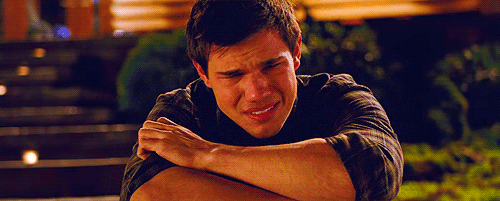
(I know, Twilight???? Seriously???)
My friends and I were always so excited for the new adaptation to hit theatres, but every time after the lights came back on, we were in one way or another disappointed.
“How could they change that detail?”
“How could they cut out that character?”
“What? That never happened in the book!”
These are all things that would likely come out of our mouths after seeing the newest must-see-book-to-movie-adaptation. I was always so mad that the movie wasn’t exactly like the book that I loved so much.
As time has gone on, I now wonder why I would ever pay money to see a movie I hoped would be identical to a book I’ve already read. In a way, in reading a book, you already get to watch the movie version, except it’s playing in your head. When I see an adaptation now, I go in wondering what the filmmakers interpreted differently that I did. What did they think was important? What characters really impact the story? Going in with an open mind has made the process much more enjoyable for me.
Of course, I still think that the major conflict and plot points should stay the same, but everything else is fair game. With major franchises and teen sagas, it’s more difficult to have full creative control, because if one too many things are changed there could be major backlash from loyal fans, but I still think that filmmakers should be able to recreate the story in their own vision.
CALL ME BY YOUR NAME
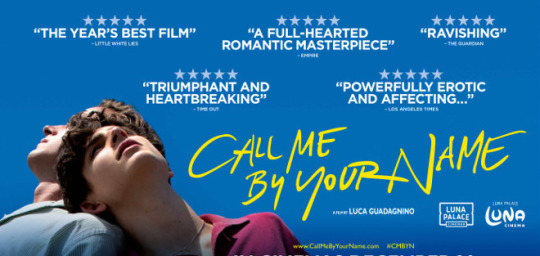
Call Me By Your Name (2017) is a movie that I watched recently, that was beautifully adapted from a book of the same name by André Aciman. I haven’t yet read the novel, but the movie has stuck with me since I watched it almost 3 weeks ago. The movie was nominated for 4 Oscars and won the Oscar for Best Adapted Screenplay. With this critical success, I was curious as to whether the author was happy with how the movie turned out or not. I found an article of an interview the author did with Vanity Fair, where he described his thought on the adaptation. He had this to say of his first arrival on the movie set:
“Right away, I knew that very little in the film would correspond to my novel and, like any author, was wistfully resigned to watching my story morph under someone else’s vision.”
I’m sure any author would be a little bit apprehensive at the thought of someone else interpreting their work and presenting it in their own vision, but at the same time, it’s so interesting that someone can tell the same story in a completely different way.
Even though Aciman was watching from the sidelines, noticing every detail different than what he first imagined, he saw the beauty of film in front of him.
“For me, the message was clear: film cuts and trims with savage brevity, where a shrug or an intercepted glance or a nervous pause between two words can lay bare the heart in ways written prose is far more nuanced and needs more time and space on the page. But the thing is, I couldn’t write silence. I couldn’t measure pauses and breaths and the most elusive yet expressive body language.”

There are so many things that you can do in film that you just can’t do in a novel, and the author realized that. Although many things were different from the film to the novel, particularly the final scene, Aciman knew that these were still his characters, and the themes of his story were still being expressed, just in a different way than he originally imagined.
“I recall that when discussing his plans for the film, Guadagnino had told me that he would end the film with a shot of young Elio weeping before the camera. My heart sank. This was not at all what I had envisaged for the ending. The last pages of my novel sought to capture the lovers 20 years later as they reconnect and tell each other that, despite the years, they’ve forgotten nothing. When I finally saw the film at the Berlin International Film festival, I was stunned. The ending captured the very spirit of the novel I had written in ways that I could never have imagined or anticipated, and as for the music, it resonated with the love of the two young men, so much so that the final scene with Elio and Sufjan’s song stayed with me long, long after I walked out of the movie theater and, as happens so rarely, into the next morning and the evening after that.”
youtube
Above is that final scene. If you haven’t seen the movie sorry for the spoiler but this scene was utterly heartbreaking. It encompasses the feelings of loss and isolation that everyone feels at some point in their life, and when watching this scene those familiar feelings come rushing back.
Although the film is different from the novel, the beauty of both can be appreciated. Just as the other said there are things that you can do in film that don’t translate to literature. You can’t write silence. On the flip side, there are things you can do in writing that you can’t in film. You can’t hear the voice of the narrator throughout the whole movie, and all of their innermost thoughts. Sure there’s voice overs and POV shots, but those aren’t the same as seeing everything from one character’s eyes.
13 REASONS WHY

The second adaptation I want to talk about is the TV series 13 Reasons Why (2017). While very controversial even to this day, as we approach the release of the second season, this series made a very large impact on the world for a while, and it was all based on the novel written by Jay Asher. I read this book at some time in elementary school, and while it was pretty devastating to read, I forgot about it not too long after. The book didn’t have a lasting impact on me, and I forgot all about Hannah Baker’s story until the announcement that it was being made into a Netflix Original Series.
In the series the audience is able to see a lot more of the other characters, other than just Clay and Hannah. They get to know the motivations of other characters and why they do the terrible things that they do. In presenting the story this way the audience is able to see how Hannah’s suicide impacts everyone, and not just her and Clay. I think that this portrayal is more honest. In reality, even the people who hate your guts would be impacted severely by your absence. I also think that it is much harder to watch the series than it is to read the book. Seeing these graphic scenes has a certain impact that I don’t know is possible to achieve in writing.
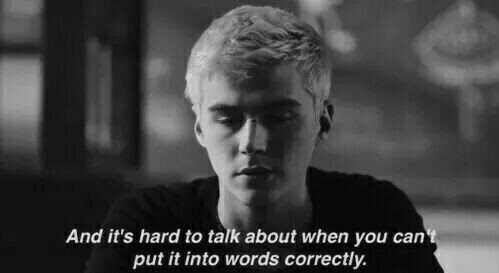
The opposite of the norm is true to in this adaptation. There seems to be so much more detail in the series than the book. We get to see so much more depth in the secondary characters than ever is described in the book. Lots of extra things happen in the show that don’t happen in the book which, again, has a greater impact on audiences. One of the most controversial scenes in the show, Hannah’s suicide scene, never even happened in the book. In the novel, Hannah commits suicide by swallowing pills, but in the series, Hannah is instead graphically shown putting a razor to her arms, bleeding out in the bathtub. The series also shows more of what happens to the other characters after Hannah’s suicide, and its repercussions. Such as another character’s suicide attempt, another contemplating a school shooting from being bullied relentlessly about his part in Hannah’s suicide, etc. This interpretation brings even more taboo issues into the show, and allowed for it to spark an even larger discussion after its release.
The show made waves. While the show never would’ve been made if not for the novel, the series surpasses the novel in so many ways. The author of the book is very proud of the series and has no anger toward the producers for changing details, as he understands that it took his words to a whole new level, and allowed for the story to reach a much larger audience.
While I did the very thing I said not to do, and compared the book to the adaptation, I wanted to show that they are different enough that they can be considered as separate from each other. They can be enjoyed separately. They both shine in different ways, and it is possible to respect the creators of both for their storytelling methods.
THE SHINING

Finally, what we all came for, The Shining (1980).
At this point it’s pretty much common knowledge that Stephen King hated this adaptation when it was released. It can be assumed that this is because it is so different from his original novel. I have never read the novel, but in reading up on the topic I see why King may be angry at the adaptation of his piece. I read in an article that “Kubrick’s movie is less an adaptation and more of an interpretation,” and I would agree with that statement. I honestly think that’s the way that it should be. Why would you want to see a film with the exact same characters, doing the exact same things, wrapping up in the exact same way.
Kubrick changed the characters in a way that would be more suitable for film and the time constraint associated with it. In the novel, the reader is able to see Jack Torrance’s soft side, and the part of him that doesn’t want to succumb to his addiction. He has more redeeming qualities in the novel, but I think that Kubrick wanted a physical villain and an antagonist other than the hotel itself. He wanted the audience to loathe Jack Torrance and be uneasy at the sight of him from the beginning of the movie. In doing this, every time Jack is around another character the audience wonders if he’s going to finally snap. The movie wouldn’t be as scary if we weren’t equally as scared of Jack as we are the hotel.
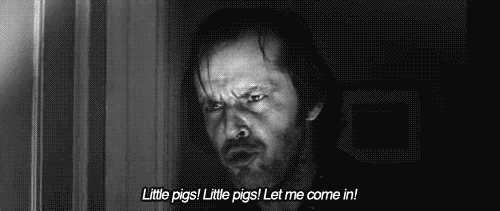
A famous changed detail from the book to the movie is the ending. In King’s version, the hotel is burned down, but in Kubrick’s it freezes. Again, I think that this contributes to the horror of the movie. If the hotel burns down it is sending a message that the scary times are over, it’ll all be okay, the bad thing is gone, but in Jack freezing instead, the threat is still lurking, capable of thawing and wreaking havoc once again. This works for the film medium, but for a novel the readers might want something more conclusive. Of course the inconclusive ending does follow Kubrick’s style, as it is another question left unanswered at the end of the film. Both the burning and freezing of the Overlook Hotel make for a great ending, and they can both be respected by readers and audiences alike.
King and Kubrick are both artists, and nobody should try to say that one’s version of the story is better. They are simply different interpretations of the same characters, each story horrifying in its own way. They can be enjoyed as separate entities, and I think that’s what most filmmakers hope for when releasing a movie. They want it to be their work just as much as the original author’s.
WRAPPING UP
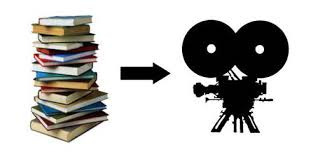
Books and movies (and television for that matter) are completely different mediums, and adaptations shouldn’t be ridiculed for every single detail that is different from what happened in the book. I think that when making an adaptation the novel should be your general outline, but you can jump off and explore new ideas from there. If you don’t want your favourite book to be wrecked by an adaptation then perhaps you should go in with an open mind, and be willing to see the story told from a new perspective. If you can’t do that then it might be better not to see adapted screenplays at all. Respect what authors do with their own characters, and respect what filmmakers make their characters do differently. It’s all art, people.
0 notes
Text
RunIQ audit: New Balance follows runners with Android Wear and Strava Because an athletic organization made it doesn't mean it's made for athletes.
New Balance and Intel have collaborated to discharge one of the principal new Android Wear watches of the year. The RunIQ wellness watch is a runner's sidekick that components worked in support for Strava, and in addition New Balance's own running application. Since it has each fundamental sensor you'd have to track an exercise, it's additionally contending with the most prepared smartwatches available, including the Apple Watch Series 2, the LG Watch Sport, and even the Garmin Fenix 3 HR.
Loaded down with a GPS, optical heart-rate screen, and the sky is the limit from there, the $299 RunIQ needs to be the smartwatch that runners wear both on the trail and at the workplace. Be that as it may, in light of the fact that it was produced by one of the greatest athletic clothing organizations in the nation doesn't mean it's the most important instrument a runner could have.
Look and feel
What Nike did with its model of the Apple Watch Series 2, New Balance did with the RunIQ Android Wear wellness watch. It's an all-dark mammoth of a tracker with a 1.39-inch, 400×400-pixel, AMOLED show inserted in a thick, matte dark case. On the crown are three physical catches, here and there select catches, and a bigger, center home catch that is marked with a little New Balance logo. The top catch opens the default running application, which is Strava on this gadget; the center catch acts like most comparable catches do on Android Wear by raising the application drawer; and the base catch goes about as a one-touch lap counter while you're recording a run.
Two parts of a standard 22mm band join to the case, and New Balance made the RunIQ's band out of delicate touch silicone. This makes it very adaptable, and the little gaps all through the wristband give you a lot of fixing alternatives. You can utilize other 22mm groups with the case, yet the default dark silicone band compliments the inconspicuous style of the case. As a watch, it's smooth in a peculiar, dull manner, and it looks more respectable than LG's $349 Watch Sport. In any case, the RunIQ unquestionably doesn't have the style or expert look that Garmin's $549 Fenix 3 HR has. On the off chance that you like the lively stylish, you may appreciate New Balance's wellness watch. The whole outline is likewise water-safe up to 5 ATM, or 50 meters. Yet, it's not intended to track swimming activities.
At 14mm, the RunIQ watch is additionally truly thick. This isn't shocking since it holds an accelerometer, spinner, GPS, GLONASS, and optical heart rate screen. Every one of those sensors take up a lot of land, and keeping in mind that the 2.6-ounce RunIQ isn't especially substantial, it feels expansive on my wrist contrasted with the Apple Watch Series 2 (which likewise incorporates each one of those sensors). Its 410-mAh battery ought to help it most recent 24 hours on a solitary charge, or up to five hours when in GPS mode. On our Android Wear battery test, the RunIQ watch kept going a normal of 271 minutes, or pretty much 4.5 hours. That is on the low side for a wellness device, yet not incredible in smartwatches—those numbers are generally in accordance with what you'll get from an Apple Watch. Daily charging is something you'll simply need to bargain with.Features
The RunIQ watch is essentially a running gadget bolstered by New Balance and Strava programming. It's not running Android Wear 2.0, but rather it will be refreshed this spring to the most up to date form of Google's wearable OS. A New Balance agent disclosed to me the best elements of the new Google Fit, including exercise acknowledgment and rep checking, may go to the RunIQ watch, however that hasn't been affirmed yet. The watch still has no official date for being refreshed to Android Wear 2.0 either.
The default watch face is New Balance-marked, with the time in expansive numbers in the center. Three entanglements let you effortlessly get to the gadget's heart rate screen, begin another keep running (with New Balance's RunIQ application), or check your day by day step number. You can likewise check day by day movement details, including steps, calories, and separation, in Google Fit on the off chance that you incline toward, and you can utilize the pre-introduced Strava application to begin recording a run.
Having New Balance's run-recording intricacy on the home screen is odd and repetitive when Strava is the "default" running application. Both applications let you do a similar thing, so there's truly no "default application" limiting you—yet every one of your information, regardless of which application you record it with, gets transferred to Strava. You can likewise download any game application you need that is accessible on Android Wear, so if neither of those is some tea, you can switch effectively. I downloaded Runtastic too, just to perceive how the following knowledge varies from the two preloaded applications.
New Balance's RunIQ application handles all the action following on the watch, which is helpful amid an exercise. You can either tap the middle entanglement on the watch face to open RunIQ or press the top catch on the watch's crown. The sheer size of the show and its huge, blocky white typography make seeing details simple initially. The show has four unique screens you can swipe through: one has a span clock and your present pace, another has your heart rate progressively, one has your means for each moment continuously, and a last screen numbers your laps.
New Balance focuses on the utilization of the base side catch as a simpler approach to characterize laps amid an exercise than bungling your conceivably damp with sweat fingers over the touch show. That catch is unquestionably more advantageous: I set the show to the heart rate screen and never needed to touch it again until I needed to end the exercise. I just squeezed the base catch to separate my time with laps.
The RunIQ's optical heart rate screen is precise when measuring lower pulsates every moment, remaining inside 3 BPM of the Polar H7 trunk strap more often than not. It was at times exuberant and rose two or three pulsates higher than my genuine heart rate. However, it just took an additional second or two to level out and coordinate the trunk strap's perusing. Running was an alternate story however, and the RunIQ watch was somewhat everywhere throughout the heart rate delineate. It wasn't absolutely mistaken, recently nervous: taking care of business, the RunIQ watch was inside 3 BPM of the H7 trunk strap even while measuring BPMs in the 170s.
I do a great deal of running/strolling sessions, in which I interchange sprinting and strolling for a couple of minutes each. The RunIQ observe for the most part stumbled up when it detected my heart rate bringing down toward the start of a mobile fragment. While the H7 trunk strap had no issue revealing a progressive back off from 179 BPM to 145 BPM, the RunIQ watch dropped all the more rapidly to around 111 BPM. It would then take 30 seconds to a moment or so to recalibrate back to around 135 BPM. Even from a pessimistic standpoint, the RunIQ watch leveled out to 10 BPM lower than the H7 trunk strap.
GPS and music
The RunIQ watch's GPS, then again, was incredible to utilize. The GPS naturally scans for your area when you open the RunIQ application, before you begin a run. It took just a single to three seconds to discover my area more often than not, and you can likewise begin following an action while it finds you. Different gadgets make you hold up to start your activity until it finds your area, however not the RunIQ.
Out of RunIQ, Strava, and Runtastic, RunIQ is my most loved Android Wear application to use to track running on this watch, for the most part since it demonstrates an assortment of details amid an exercise. The local Strava and Runtastic applications just show you length, separate, and now and again pace, and Runtastic doesn't even naturally record your heart rate (despite the fact that the RunIQ watch has that sensor). In the Runtastic versatile application, you can match the Runtastic-marked trunk strap, the Basis Peak, a Runtastic collector, or "other" heart rate screens. Be that as it may, I generally got a mistake when I took a stab at blending the RunIQ watch with it.
The RunIQ watch has 4GB of capacity, which is critical for runners who would prefer not to bring their cell phone with them yet at the same time need to tune in to music through Google Play Music. New Balance turned out with a couple of remote earbuds as a team with Jabra as of late, however the organization says different remote earphones, including TK, are bolstered also. Google Play Music matching up just works when the gadget is associated with an Android cell phone, however. iPhone clients are out of luck.My New Balance and Strava applications
We should discuss the two primary portable applications for the RunIQ watch: My New Balance and Strava. The previous is utilized to set up the RunIQ watch and change some of its settings. Notwithstanding, finding the RunIQ-particular controls in the application may be troublesome on the grounds that a large portion of My New Balance is loaded with the organization's limited time material and store connections to New Balance items. You're additionally given "NB Points," or computerized rewards focuses, when you do things like interface your gadget to the application or record an exercise. You can reclaim those focuses for rebates at New Balance and free livens from the organization.
Five choices down in the application's menu is the place you'll discover pertinent RunIQ controls that let you associate with your Strava account, figure out how to synchronize Google Play Music to your watch, and change RunIQ settings. You'll need to investigate all the action following and warning settings, where you can pick a favored following metric from time, separation, and pace to appear on the watch. You can likewise alter voice control and vibration cautions that happen when you hit a particular heart rate zone or hit another mile. This is the place you can change the appearance setting which gives you a chance to change the foundation shading topic of the watch's display.Those are two of the three major reasons why you require the My New Balance application. The third reason? The application is required for the RunIQ's underlying setup. That is fantastically baffling, particularly considering no movement information lives in that application—everything the RunIQ watch tracks sustains into Strava. Just a couple of these marked Android Wear watches exist at this moment, however this is an awful approach to make a marked smartwatch. New Balance didn't attempt to make an action examination application—and.
0 notes